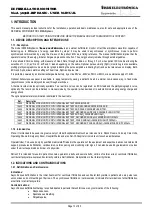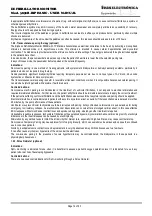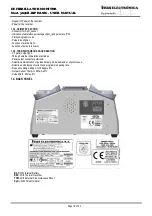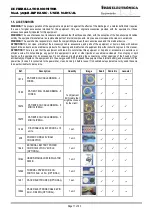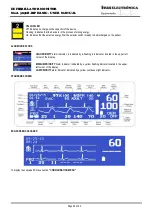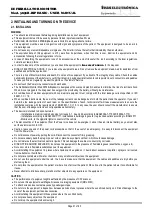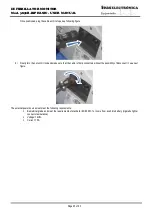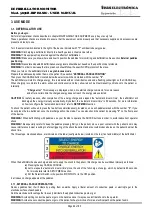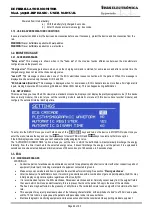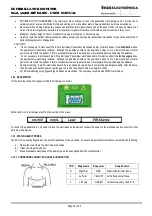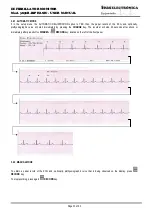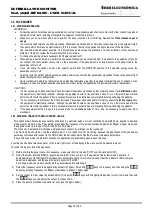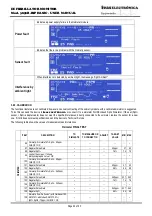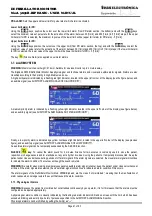
DEFIBRILLATOR MONITOR
Mod. 3850B-BIPHASIC - USER MANUAL
Page 27 of 63
WARNING! To avoid risk of electrical shock, do not touch the gelled area of the pads while pacing.
ATTENTION! It is recommended DO NOT USE Xylocaine to apply a shock.
3.1.2. EXTERNAL PADDLES POSITIONING
The figure below shows the positioning of the paddles on the patient.
Apply paddles firmly to the anterior wall of the chest.
Place the Sternum paddle to the right (patient’s right) of the patient’s sternum, just below the clavicle.
Place the Apex paddle on the chest wall, just below and to the left of the patient’s left nipple, along the antero-axillary line.
Rub the paddles against the skin to maximize the paddle-to-patient contact.
The paddles may be used for ECG monitoring in emergency situations when time does not allow for connection of standard ECG
monitoring electrodes.
3.1.3. MODE OF OPERATING
WARNING! There is a risk of Electrical Shock and death. Do not use this equipment if you doubt of the integrity of any cable. Check the
cables periodically (disconnect them before) to verify their integrity; paying special attention to cable points close to connectors and
paddles. In case you find an irregularity, request the part to our Customer’s Service.
WARNING! It is not necessary to disconnect the ECG electrodes, Pacemaker electrodes and/or Oximetry sensor for defibrillation since
the equipment is electrically isolated; although the paddles should not be positioned close to or on the electrodes or metal parts in
contact with the patient, if this is not possible remove the electrodes or metal parts before positioning the paddles.
WARNING! When defibrillating the patient be careful to avoid the contact between patient’s body parts (exposed skin, head, arms and
legs) with metallic objects (such as parts of the bed) that might generate non desired paths for the defibrillation current.
WARNING! Rescuers performing chest compressions during external defibrillation are exposed to leakage currents.
WARNING! Do not touch the bed, patient’s body, or any equipment connected to the patient during defibrillation. A severe electrical
shock can result.
WARNING! When positioning the paddles on the patient for energy discharge, make sure no one is near or in contact with the patient.
CAUTION! Verify that the devices connected to the patient are protected against defibrillation before shock to the patient. If necessary
disconnect the patient from those devices that are not protected against defibrillation so that they are not damaged by the shock.
CAUTION! Be sure to know the methods used to discharge the energy charged in the Defibrillator Monitor Model 3850B.
CAUTION! Do not discharge the Defibrillator Monitor placing paddle against paddle or in the paddle support.
ELECTROSURGERY MESSAGES
WARNINGS
•
It is recommended to place the ECG electrodes, Pacemaker electrodes and/or Oximetry sensor away from the surgical field
in the case in which it will use an electrocautery; this is to prevent burns on the patient’s body in the area of the electrode.
•
The neutral electrode of the electrocautery must have adequate contact with the patient, otherwise it may cause burns to
the patient.
•
It is not necessary to disconnect the ECG electrodes, Pacemaker electrodes and/or Oximetry sensor for electrosurgery
since the equipment is electrically isolated; although the paddles should not be positioned close to or on the electrodes or
metal parts in contact with the patient, if this is not possible remove the electrodes or metal parts before positioning the
paddles.
•
The use of an electrocautery it can cause interference in the operation of this device.

